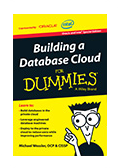50 Open Source Replacements for Really Expensive Software
The “Great Recession” has businesses and consumers alike looking for ways to cut costs. That includes looking for cheaper alternatives to expensive software.
- Accounting: TurboCASH, Phreebooks
- Business Intelligence: Jaspersoft, Pentaho, Palo BI Suite, JMagallanes, OpenReports
- Business Process Management: ProcessMaker
- CAD: BRL-CAD, Archimedes
- Customer Relationship Management: Sugar Community Edition
- Database: MySQL, Firebird, Kexi
- Desktop Publishing: Scribus
- E-mail/Collaboration/Groupware: Zimbra
- Enterprise Resource Planning (ERP): OpenERP, Openbravo, ADempiere
- Gateway Security Appliances: Endian Firewall Community, Untangle
- Graphics/Drawing: Dia, Gimp, Inkscape, Paint.Net
- Office Productivity: OpenOffice.org, KOffice, NeoOffice, Oracle OpenOffice
- Operating System: Red Hat, SUSE, Ubuntu, Debian
- PDF Tools: PDFCreator
- Point of Sale: Openbravo POS, Lemon POS
- Project Management: OpenProj, GanttProject
- Speech Recognition: Simon
- Video Tools: Blender, Cinelerra, OpenShot Video Editor, Kdenlive, CineFX, Avidemux
- Web Application Tools: Open BlueDragon
- Web Site Authoring: Kompozer, NVU, Bluefish, SeaMonkey
If you have any question or opinion, feel free to send us a messageor leave your comments below
Reference: 50 Open Source Replacements for Really Expensive Software






























